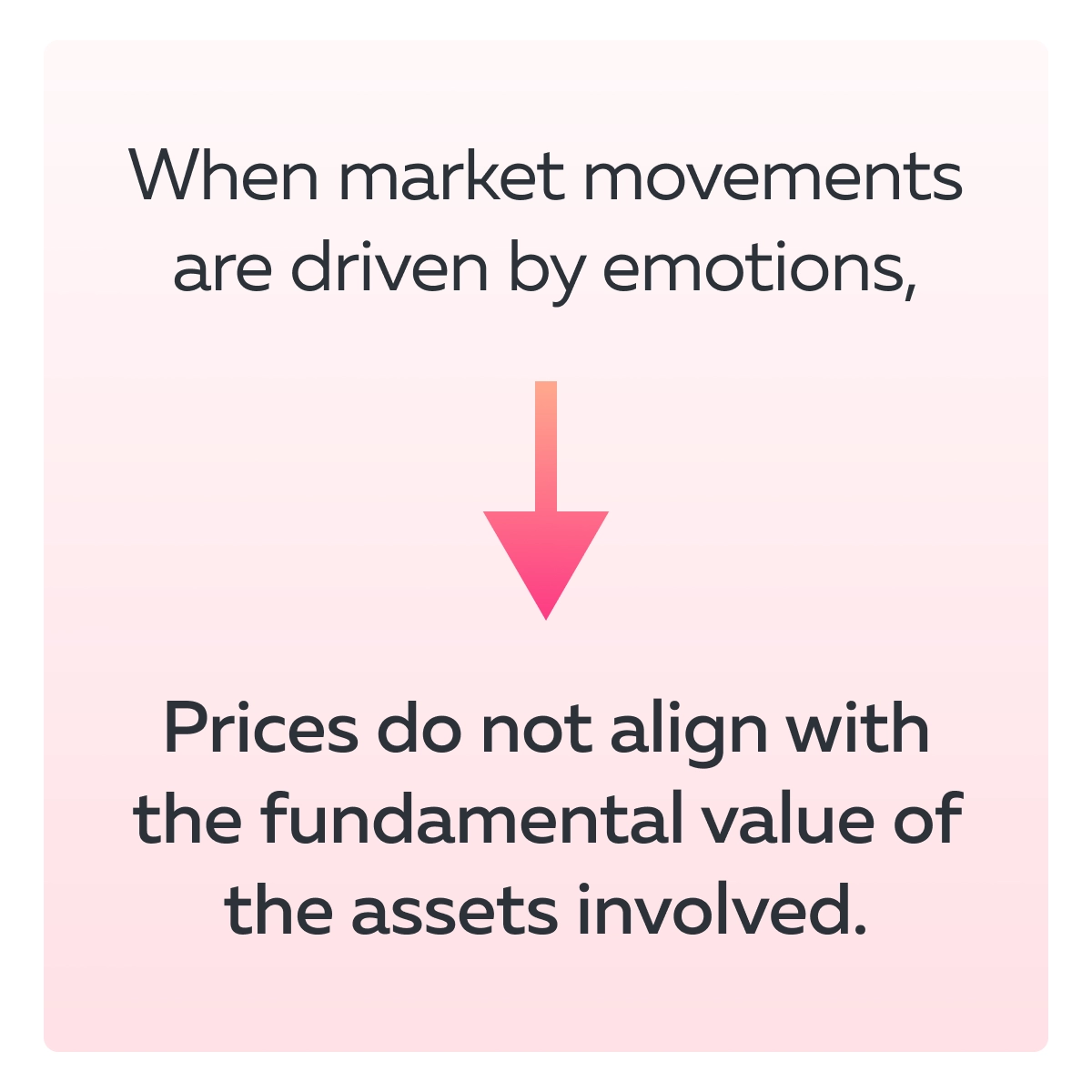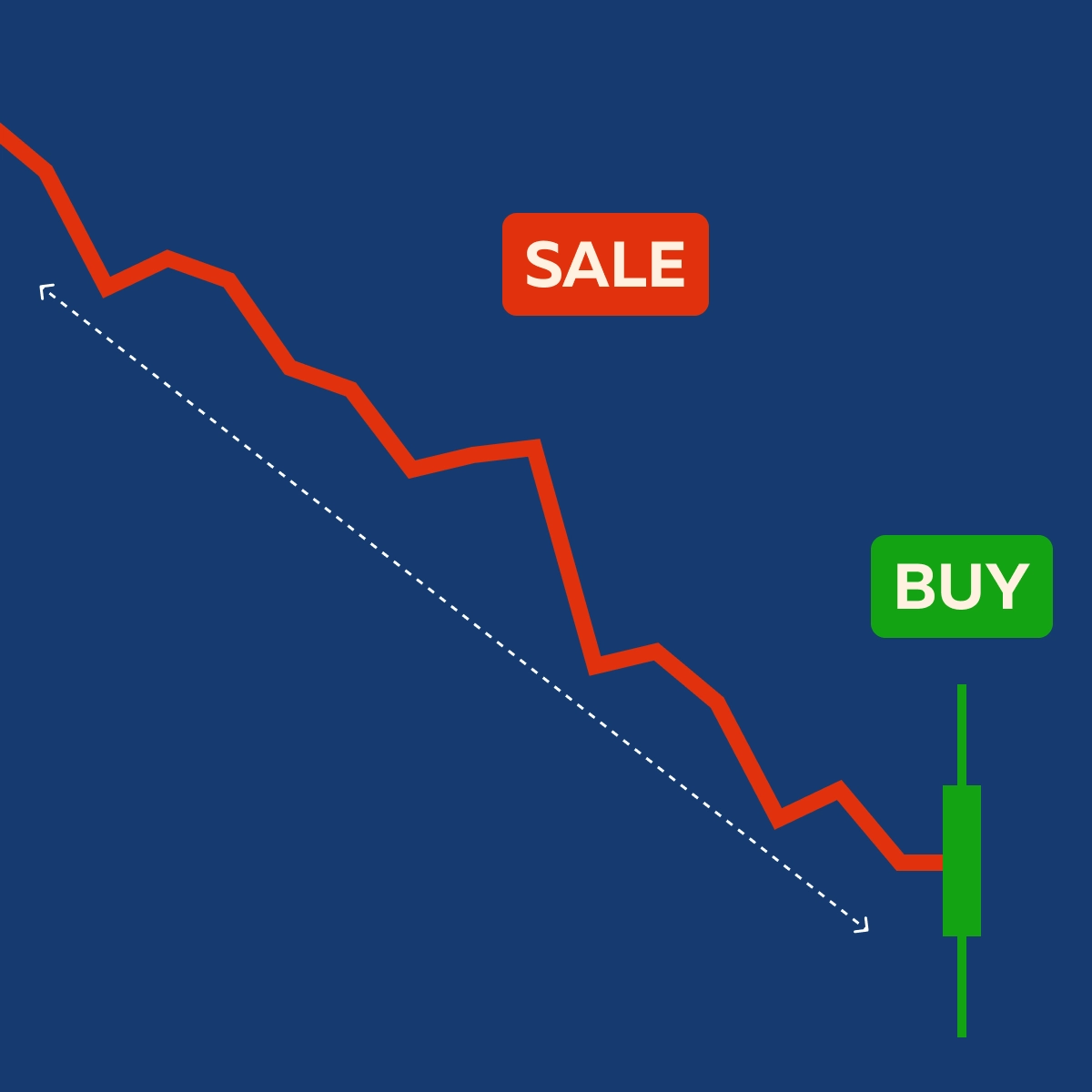

December Trading
Deals Are Live!
Save on Global+, data access,
and add-ons.
See All December Deals

Black Friday
Nov 28-Dec 31
29 days : 4 hours
50% OFF Global+ Quarterly
+ 50% OFF Data (3 months)

Cyber Monday
Dec 1 - Dec 31
29 days : 4 hours
60% OFF Global+ Monthly
+ Data (1 month)

Add-on Deals
Dec 1 - Dec 31
29 days : 4 hours
50% OFF
Add-ons

New Year Sale
Dec 26 - Jan 1
23 days : 4 hours
30% OFF Global+ Lifetime
*Data not included
Education
March 29, 2024
SHARE
Going Against the Crowd in Trading: Contrarian Strategies for Market Success
Have you seen the stocks dropping and almost everyone, except for a few, selling their assets in a panic? Ever wondered why those few traders aren’t doing the same? Contrarian Trading is a unique approach in which traders go against the crowd and identify opportunities when market sentiment is at its extremes.
In this article, we will study the principles behind contrarian trading and illustrate how it can help you exploit market inefficiencies. Through real case studies, we’ll also showcase the practical application of contrarian strategies and the importance of developing a personalized trading plan.
By the end, you’ll gain a deeper understanding of entry and exit criteria, risk management, and the psychological resilience required to thrive in contrarian trading. Let’s begin.
The Power of Contrarian Trading
Contrarian trading is when you swim against the tide in the financial markets. Instead of following the crowd, contrarian traders go against prevailing market sentiment. This approach follows the assumption that when most investors are overly optimistic, it might be a sign of an overvalued market, and vice versa.

Let’s understand how the collective behavior of investors influences financial markets and the response of contrarian traders in such a situation.
| Over-optimism | Over-pessimism | Response of Contrarian Traders |
|
|
|
Thus, in essence, contrarian trading is about going against the prevailing sentiment, whether it’s extreme optimism or extreme pessimism. Most contrarian traders believe that:

Why Contrarian Trading Is A Valuable Approach
Contrarian traders gain a competitive edge as they aim to benefit from moments when the crowd’s behavior appears irrational. They assume that:
- If everyone is overly optimistic about a particular investment, it could signal an overvalued market.
- Conversely, widespread pessimism and panic selling may create opportunities to buy undervalued assets.
Also, contrarian traders can identify turning points in the market by going against prevailing sentiment. When the majority is excessively bullish, contrarians look for signs of a potential correction or reversal. Conversely, in times of extreme pessimism, they seek opportunities for a market upswing.
Furthermore, contrarian trading capitalizes on the tendency of markets to overreact. By identifying situations where the crowd’s sentiment has swung too far, contrarian traders position themselves to benefit from the subsequent correction or reversal in market trends.
Real-life Cases
It is commonly believed that herd behavior leads to market bubbles and subsequent corrections. Contrarian traders go against the prevailing sentiment and capitalize on these situations by:
- Either avoiding the overvalued assets,
- Or actively betting against them.
Let’s understand this approach better through some popular real-life cases:
| Case | Herd Behavior | Contrarian Opportunity |
| Dot-Com Bubble (Late 1990s) |
|
|
| Housing Bubble and Financial Crisis (2007-2008): |
|
|
| Bitcoin Bubble (2017): |
|
|
Contrarian Strategies: Navigating Market Sentiment
Contrarian strategies thrive on the idea that markets are not always rational and can be influenced by emotions. By going against prevailing sentiment, traders aim to exploit situations where the market may have overreacted or underreacted, creating temporary inefficiencies that can be capitalized upon.
Read the table below to explore some popular contrarian strategies and learn how contrarian traders break away from herd mentality.
| Strategy | Explanation | Example | Related Case Study |
| Sentiment Reversal |
|
|
|
| Fade the News |
|
|
|
| Value Investing |
|
|
|
| Technical Divergence |
|
|
|
Contrarian Indicators and Tools
Specific contrarian indicators and tools play a crucial role in helping traders identify opportunities and make informed decisions when adopting a contrarian approach. Let’s explore some popular contrarian indicators in depth.
Sentiment Indicators
| Parameters | CBOE Volatility Index (VIX) | Put/Call Ratio |
| Meaning |
|
|
| Case Study/Example |
|
|
Technical Indicators
- Overbought/Oversold Conditions
-
-
- Overbought and oversold conditions are identified using indicators like RSI.
- An RSI above 70 indicates overbought conditions, suggesting a potential reversal.
- While an RSI below 30 signals oversold conditions, indicating a potential bounce.
-
- Case Study:
-
-
-
- In late 2017, Bitcoin reached new all-time highs.
- The RSI for Bitcoin consistently stayed above 70, signaling overbought conditions.
- Contrarian traders recognized this overextension and:
- Took short positions or
- Sold Bitcoin futures
- The subsequent correction in 2018, validated the contrarian approach.
-
-
- Divergences
-
-
- Divergences occur when the price of an asset moves in the opposite direction of a technical indicator.
- For example,
- A stock is making new highs,
- But the RSI is not confirming those highs.
- Divergences signal weakening momentum and a potential reversal.
-
- Case Study:
-
-
-
- During the 2019 stock market rally, Apple Inc. exhibited a series of new highs.
- However, the RSI failed to confirm these highs, forming a bearish divergence.
- Contrarian traders:
- Took short positions or
- Bought put options.
- The subsequent correction validated the divergence as a reliable contrarian indicator
-
-
- Trend Exhaustion Patterns
-
-
- Several patterns signal the end of a trend, like:
- Double tops or bottoms,
- Head and shoulders, or
- Exhaustion gaps.
- Contrarian traders look for these patterns as potential reversal signals.
- Several patterns signal the end of a trend, like:
-
- Case Study:
-
-
- In early 2020, Beyond Meat (BYND) experienced a meteoric rise following its IPO.
- The stock formed a double-top pattern, signaling potential trend exhaustion.
- Contrarian traders took short positions, anticipating a reversal.
- Subsequent price declines validated the contrarian strategy.
-
Fundamental Analysis
- Valuation Metrics:
-
-
- Contrarian traders assess the relative value of a stock by analyzing the following and other metrics:
- P/E ratios,
- Price-to-book ratios, and
- Dividend yields.
- If a stock appears undervalued based on these metrics, it may be considered a contrarian opportunity.
- Contrarian traders assess the relative value of a stock by analyzing the following and other metrics:
-
- Case study:
- During the tech bubble of the late 1990s, many internet-related stocks reached astronomical valuations based on traditional metrics. Contrarian value investors, such as Warren Buffett, avoided these overvalued stocks and focused on undervalued opportunities in more traditional sectors. The subsequent dot-com crash validated the contrarian approach.
- Earnings Reports:
- Contrarian traders pay attention to earnings reports and guidance.
- If a company reports strong earnings but experiences a market sell-off, contrarians view it as:
- An overreaction and
- An opportunity to buy.
- Case Study:
- In 2018, Facebook faced a significant sell-off after a series of negative news events, including privacy concerns.
- Contrarian traders assessed Facebook’s strong earnings and growth potential.
- They viewed the market’s reaction as an overreaction and started buying the stock at discounted prices.
Market News and Events:
- News Sentiments
-
-
- Contrarian traders monitor news sentiment.
- They identify situations where extreme reactions lead to overbought or oversold conditions.
- If the market reacts excessively to news, contrarians see it as an opportunity to go against the crowd.
-
- Case Study:
- During the Eurozone debt crisis in 2011, negative news surrounding Greece and other European countries triggered widespread panic selling.
- Contrarian traders who recognized the market’s exaggerated reaction saw it as an opportunity to buy undervalued European stocks.
- Subsequent recoveries benefitted contrarians.
- Events Triggering Extreme Reactions
-
-
- Events like mergers, acquisitions, or regulatory changes trigger extreme market reactions.
- Contrarian traders assess whether:
- The market’s response is justified or
- If it represents an opportunity to go against the prevailing sentiment.
-
- Case Study:
- In 2016, the Brexit referendum resulted in a sharp decline in global markets.
- Contrarian traders assessed the fundamental strength of certain UK companies.
- They viewed the market’s response as an overreaction.
- Opportunities to go against the prevailing sentiment emerged as markets stabilized post-Brexit.
Risks and Challenges of Contrarian Trading
Contrarian trading offers unique opportunities, but it comes with inherent risks and challenges. Successful contrarian traders prioritize:
- Risk management,
- Psychological resilience, and
- A disciplined approach to capitalize on potential opportunities,
Read the table below to understand some common risks and learn how traders can manage them:
| What is the common risk? | What does it mean? | How traders can mitigate them |
| Extended Contrarian Trends |
|
|
| Market Timing challenges |
|
|
| Psychological Challenges |
|
|
| Overbought/Oversold Traps |
|
|
Developing Your Contrarian Trading Plan

Developing your contrarian trading plan allows you to align your contrarian strategies with your specific:
- Financial goals,
- Risk tolerance, and
- Time horizon.
Additionally, a well-defined plan provides clarity on when to enter and exit contrarian trades. This clarity helps eliminate emotional decision-making and reduces the likelihood of taking impulsive actions. Follow the following steps to develop and implement a contrarian trading plan:
- Step 1: Understand Contrarian Principles
-
-
- Familiarize yourself with contrarian trading concepts.
- Understand the rationale behind going against prevailing market sentiment.
-
- Step 2: Define Your Trading Goals
-
-
- Specify your financial goals, risk tolerance, and time horizon.
- Understand whether you aim for short-term gains or long-term value investments.
-
- Step 3: Choose Contrarian Strategies
-
-
- Identify specific contrarian strategies that align with your trading style. Choose from some common contrarian strategies mentioned below:
- Sentiment reversal,
- Fading the news,
- Value investing, or
- Technical divergence.
- Identify specific contrarian strategies that align with your trading style. Choose from some common contrarian strategies mentioned below:
-
- Step 4: Establish Entry and Exit Criteria
-
-
- Based on your chosen strategy, set clear criteria for entering a contrarian trade.
- This could include:
- Extreme sentiment levels,
- Technical signals, or
- Fundamental valuation metrics.
-
- Step 5: Position Sizing
-
-
- Determine the size of each position relative to your total capital.
- Avoid overexposure to a single trade.
- Ensure you can withstand potential losses without jeopardizing your overall portfolio.
-
- Step 6: Risk-Reward Ratio
-
-
- Set a risk-reward ratio for each trade.
- Ensure that potential profits outweigh potential losses.
- This could be, for example, aiming for a 2:1 or 3:1 ratio.
-
- Step 7: Learn Continuously
-
- Stay updated on:
- Market trends,
- Economic indicators, and
- News that can impact your contrarian trades.
- Engage in ongoing education to refine your understanding of contrarian principles.
- Stay updated on:
How to Improve Your Trading Plan
Contrarian traders can enhance the effectiveness of their trading plan by following these three methods:
| Backtest Your Strategy | Do Paper Trading | Perform Post-Trade Analysis |
|
|
|
Conclusion
Contrarian trading is like going against the flow in the financial river. It’s about spotting times when everyone is too excited or too scared and jumping in, anticipating things might change. While effective contrarian trading can certainly bring profits, it’s not all sunshine.
Sometimes, it’s too challenging to pinpoint the exact turning points or maintain a strong psychological balance. The markets also tend to remain irrational for longer than traders can remain solvent.
Nonetheless, through risk management and practicing popular contrarian strategies, traders develop their trading plans and execute profitable trades.
Interested in exploring diverse trading strategies to enhance your trading skills? Discover a variety of methods and mindsets in our comprehensive guide. Explore Diverse Trading Strategies.
